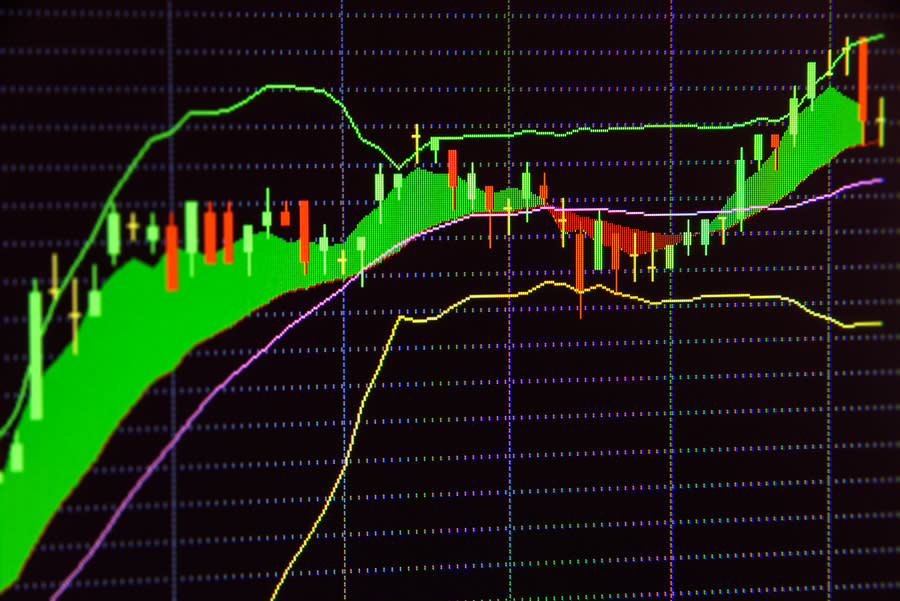3 Top-Ranked Dividend Stocks: A Smarter Way to Boost Your Retirement Income

Here's a revealing data point: older Americans are scared more of outliving wealth than of death itself.
Also, retirees who have constructed a nest egg have valid justifications to be concerned, since the traditional ways to plan for retirement may mean income can no longer cover expenses. Some retirees are now tapping their principal to make a decent living, pressed for time between decreasing investment balances and longer life expectancies.
Your parents' retirement investing plan won't cut it today.
Years ago, investors at or close to retirement could put money into fixed-income assets and depend on appealing yields to generate consistent, solid pay streams to fund a comfortable retirement. 10-year Treasury bond rates in the late 1990s floated around 6.50%, but unfortunately, those days of being able to exclusively rely on Treasury yields to fund retirement income are over.
The impact of this rate decline is sizable: over 20 years, the difference in yield for a $1 million investment in 10-year Treasuries is more than $1 million.
Today's retirees are getting hit hard by reduced bond yields - and the Social Security picture isn't too rosy either. Right now and for the near future, Social Security benefits are still being paid, but it has been estimated that the Social Security funds will be depleted as soon as 2035.
So what can retirees do? You could dramatically reduce your expenses, and go out on a limb hoping your Social Security benefits don't diminish. On the other hand, you could opt for an alternative investment that gives a steady, higher-rate income stream to supplant lessening bond yields.
Invest in Dividend Stocks
As a replacement for low yielding Treasury bonds (and other bond options), we believe dividend-paying stocks from high quality companies offer low risk and stable, predictable income investors in retirement seek.
Look for stocks that have paid steady, increasing dividends for years (or decades), and have not cut their dividends even during recessions.
A rule of thumb for finding solid income-producing stocks is to seek those that average 3% dividend yield, and positive yearly dividend growth. These stocks can help combat inflation by boosting dividends over time.
Here are three dividend-paying stocks retirees should consider for their nest egg portfolio.
Axis Capital (AXS) is currently shelling out a dividend of $0.44 per share, with a dividend yield of 3.18%. This compares to the Insurance - Property and Casualty industry's yield of 0.17% and the S&P 500's yield of 1.69%. The company's annualized dividend growth in the past year was 2.33%. Check Axis Capital (AXS) dividend history here>>>
Bar Harbor Bankshares (BHB) is paying out a dividend of $0.28 per share at the moment, with a dividend yield of 4.03% compared to the Banks - Northeast industry's yield of 2.88% and the S&P 500's yield. The annualized dividend growth of the company was 7.69% over the past year. Check Bar Harbor Bankshares (BHB) dividend history here>>>
Currently paying a dividend of $0.29 per share, COPT Defense (CDP) has a dividend yield of 4.63%. This is compared to the REIT and Equity Trust - Other industry's yield of 4.16% and the S&P 500's current yield. Annualized dividend growth for the company in the past year was 3.64%. Check COPT Defense (CDP) dividend history here>>>
But aren't stocks generally more risky than bonds?
The fact is that stocks, as an asset class, carry more risk than bonds. To counterbalance this, invest in superior quality dividend stocks that not only can grow over time but more significantly, can also decrease your overall portfolio volatility with respect to the broader stock market.
A silver lining to owning dividend stocks for your retirement portfolio is that many companies, especially blue chip stocks, increase their dividends over time, helping offset the effects of inflation on your potential retirement income.
Thinking about dividend-focused mutual funds or ETFs? Watch out for fees.
You may be thinking, "I like this dividend strategy, but instead of investing in individual stocks, I'm going to find a dividend-focused mutual fund or ETF." This approach can make sense, but be aware that some mutual funds and specialized ETFs carry high fees, which may reduce your dividend gains or income, and defeat the goal of this dividend investment approach. If you do wish to invest in a fund, do your research to find the best-quality dividend funds with the lowest fees.
Bottom Line
Whether you select high-quality, low-fee funds or stocks, seeking the steady income of dividend-paying equities can potentially offer you a path to a better and more stress-free retirement.
Want the latest recommendations from Zacks Investment Research? Today, you can download 7 Best Stocks for the Next 30 Days. Click to get this free report
Axis Capital Holdings Limited (AXS) : Free Stock Analysis Report
Bar Harbor Bankshares, Inc. (BHB) : Free Stock Analysis Report
COPT Defense Properties (CDP) : Free Stock Analysis Report
